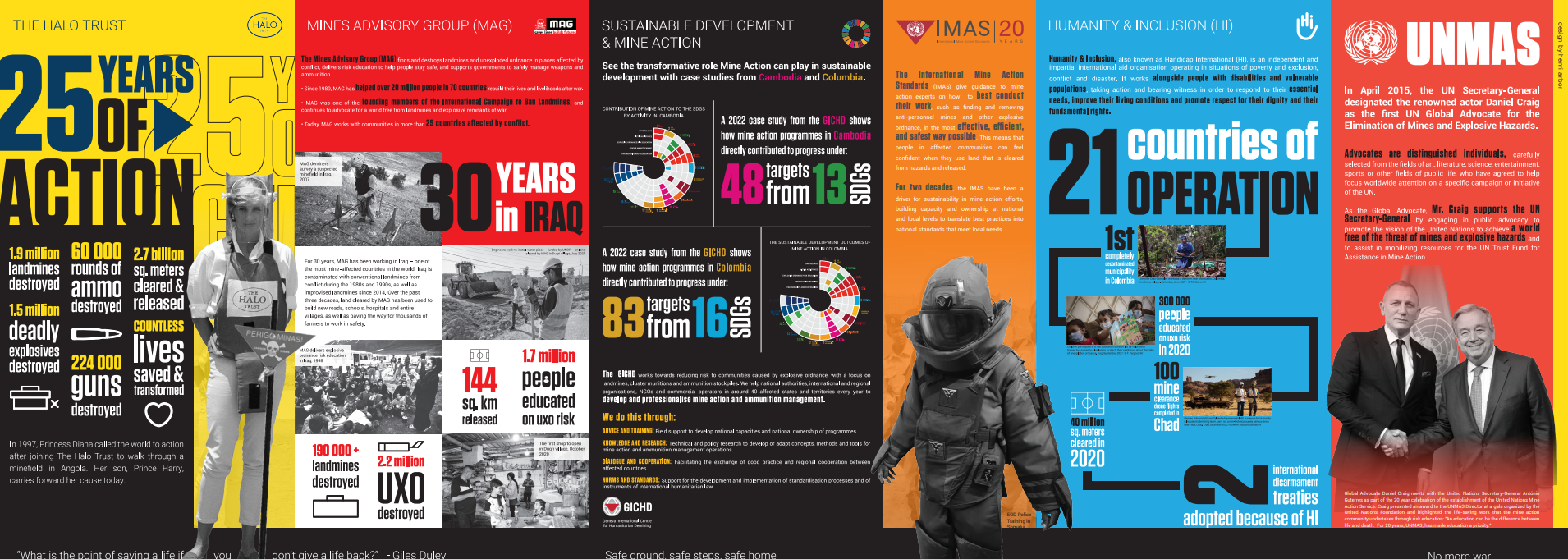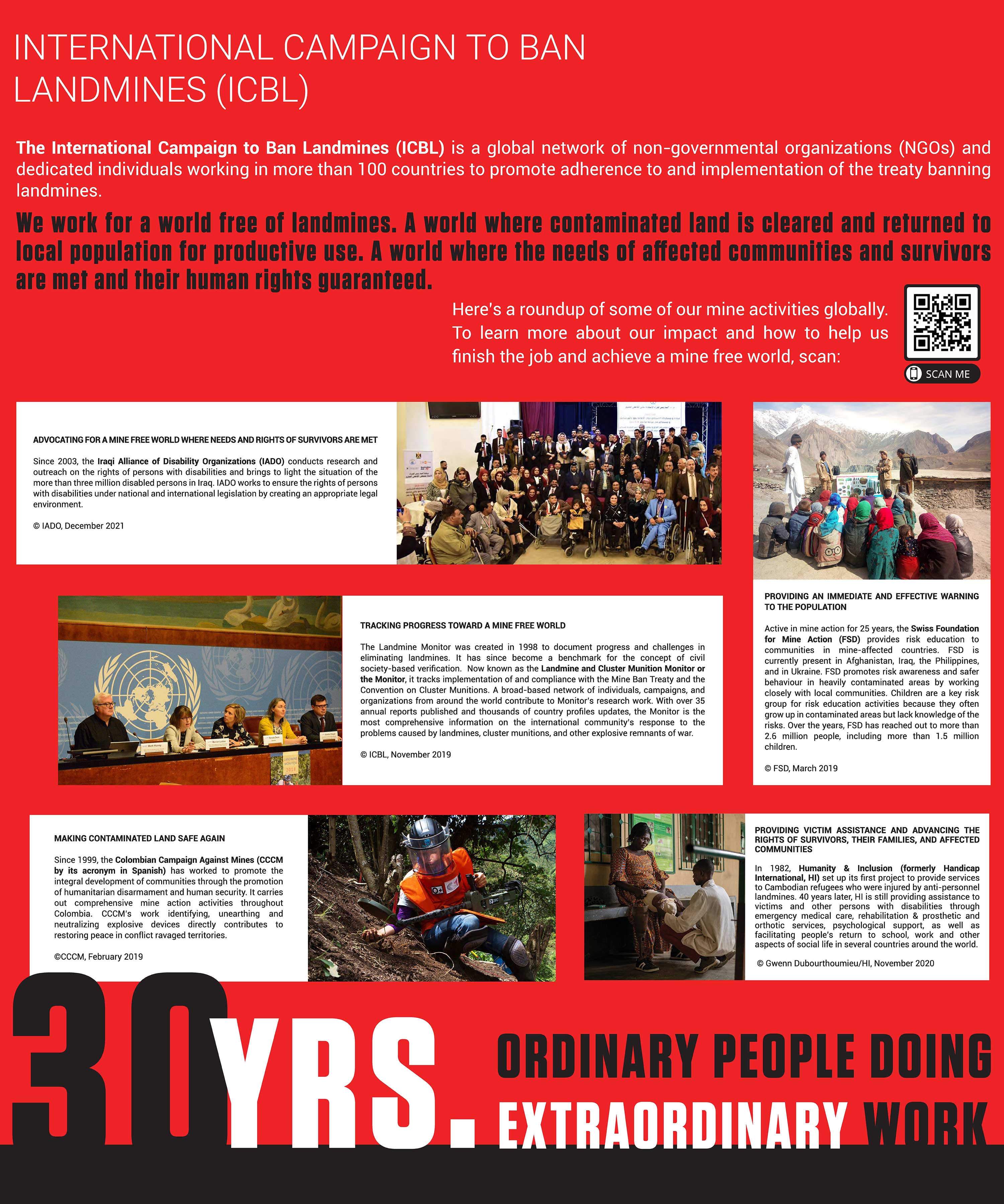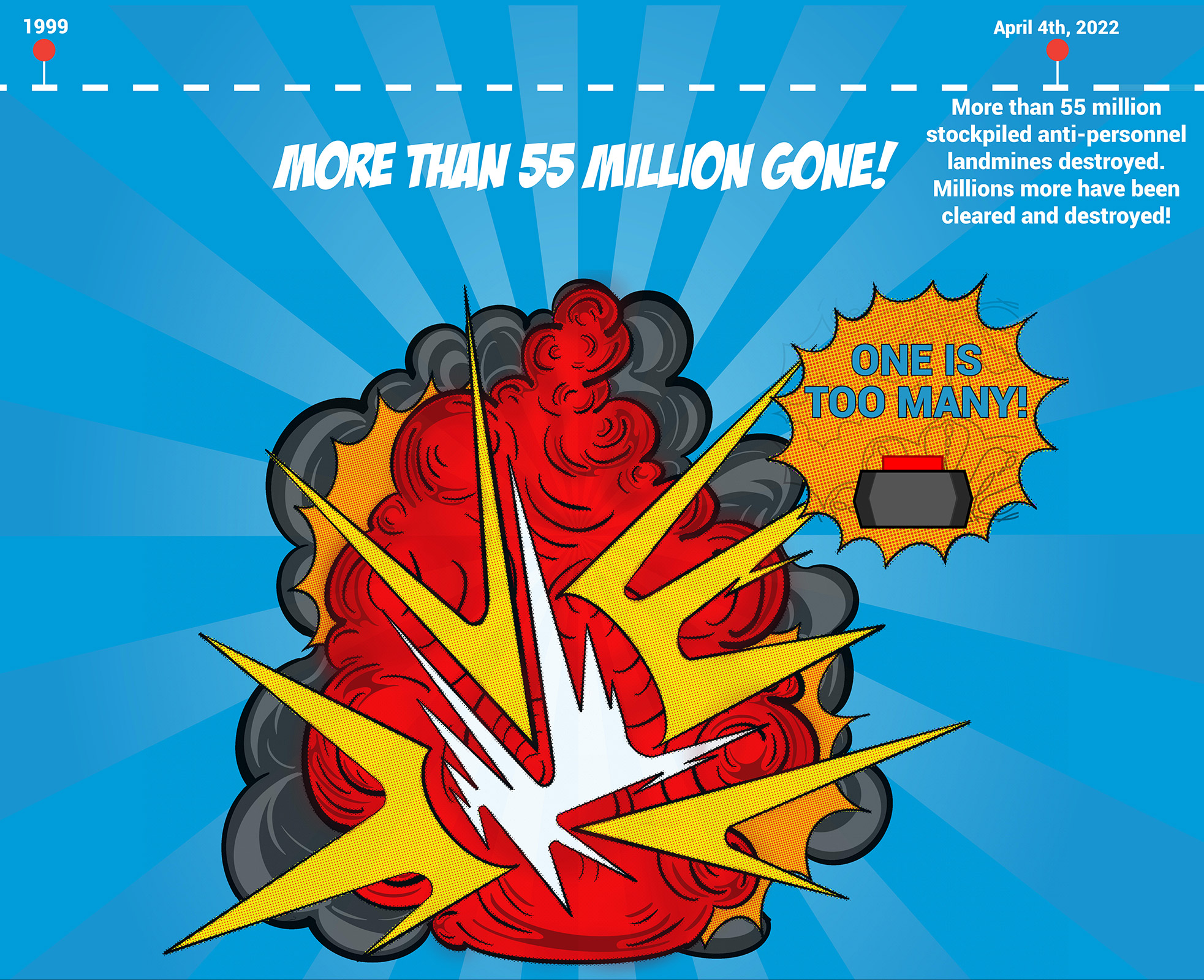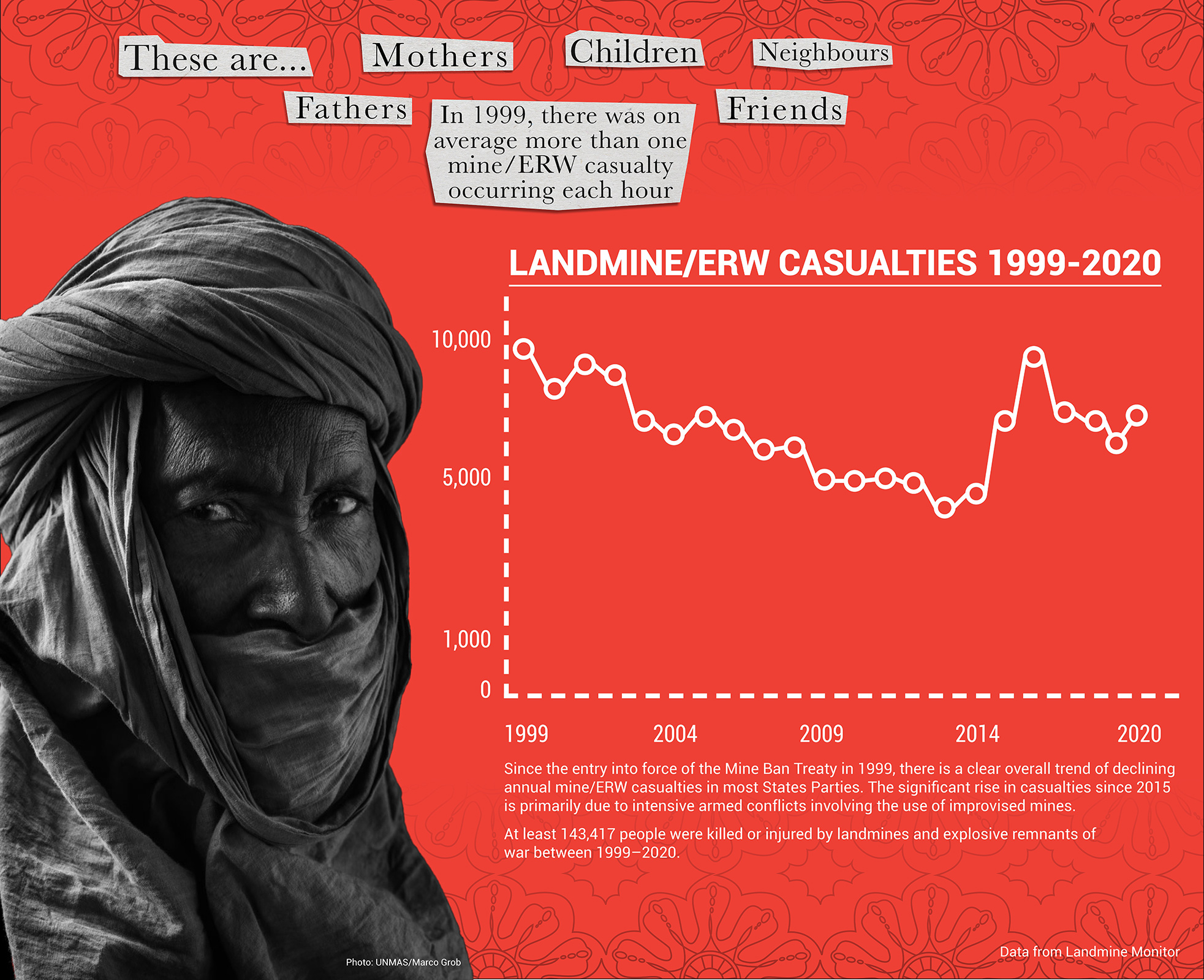

“Safe Ground” is the name of the global campaign “turning minefields into playing fields” that was launched by the Secretary-General of the United Nations in 2019, and the concept of clearing the earth of landmines and other explosive hazards to make it safe for development.
“Safe Steps” brings attention to the trepidation that too many people experience when they move about not knowing if they will detonate an explosive that could maim or kill them at any moment. “Safe Steps” also describes the procedures that deminers use when approaching contaminated areas and includes application of new technology to safely removing explosive hazards.
"Safe Home" is about restoring personal security of individuals and communities in post-conflict settings. There is no place like home, and it is difficult to feel at home without security and community.
Since the 1850s landmines were used in wars. During and after the Second World War their manufacture and use increased significantly. This baby bomb can sit in the ground for half a century or more and kill or maim anyone who steps on it. Children, women, and men playing, working, or going for a walk.
Thirty years ago, civil society, individuals, women, and men working in human rights and humanitarian assistance organizations, called for a global ban on this weapon. This movement became the International Campaign to Ban Landmines in 1992. Governments and the United Nations listened, and in 1999 the Convention to Ban Landmines, known as the Ottawa Treaty, came into force.
Today, 164 nations have signed onto this treaty. Millions of mines have been destroyed, thousands of square kilometers of land have been cleared. We must make the ground safe, to take steps to build safe communities.

The UN Secretary-General António Guterres during his visit to Mesetas, Colombia, in 2018. UN Photo
Universal adherence to the Anti-Personnel Mine Ban Convention, the Convention on Certain Conventional Weapons and the Convention on Cluster Munitions and strict compliance with international humanitarian and human rights law pave the way to ensuring protection and saving lives. I urge all States to accede to these conventions and call upon those that have already done so to continue their steadfast implementation and to recommit to reporting and advocacy efforts."
– António Guterres, UN Secretary-General, from his report to the Seventy-sixth session of the General Assembly, Assistance in mine action, August 2021, A/76/283
Art has always been at the forefront of revolution and social change
No More War is the opportunity for us all to collaborate and create change through our creativity and passion. In October 2021, we called on artists and creatives to join us in calling for No More War, creating work in whatever medium allows them to express their feelings.
The murals on display here were made by Belgian artist Sibomana, using photographs taken by Giles Duley in Afghanistan in August 2021. These first collaborations focus on the stories of Afghan civilians injured in the recent fighting. Throughout the conflict their voices have largely gone unheard, their stories representative of the millions affected by these past twenty years of war.
As taxpayers that fund these conflicts, as concerned citizens of a global community, and in solidarity with those directly impacted by war, we feel - whether pragmatist or humanist in argument - it is time to say “No More War”.
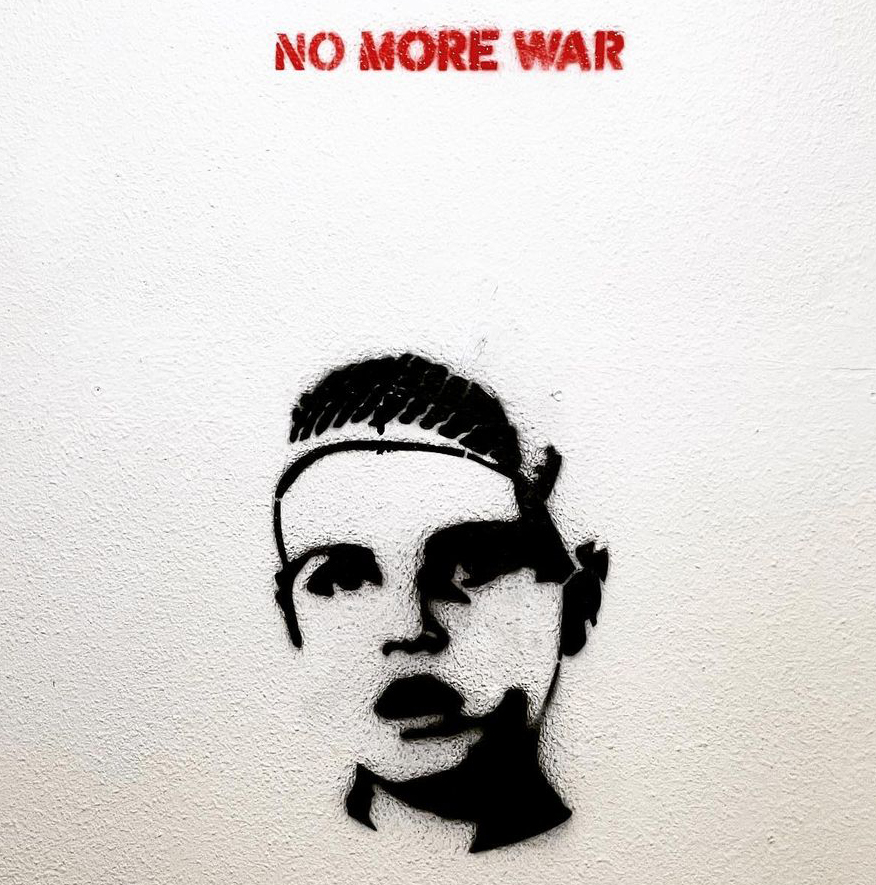
"What is the point of saving a life if you don't give a life back?" - Giles Duley



"When a child is injured like this, the whole world should see" - Giles Duley


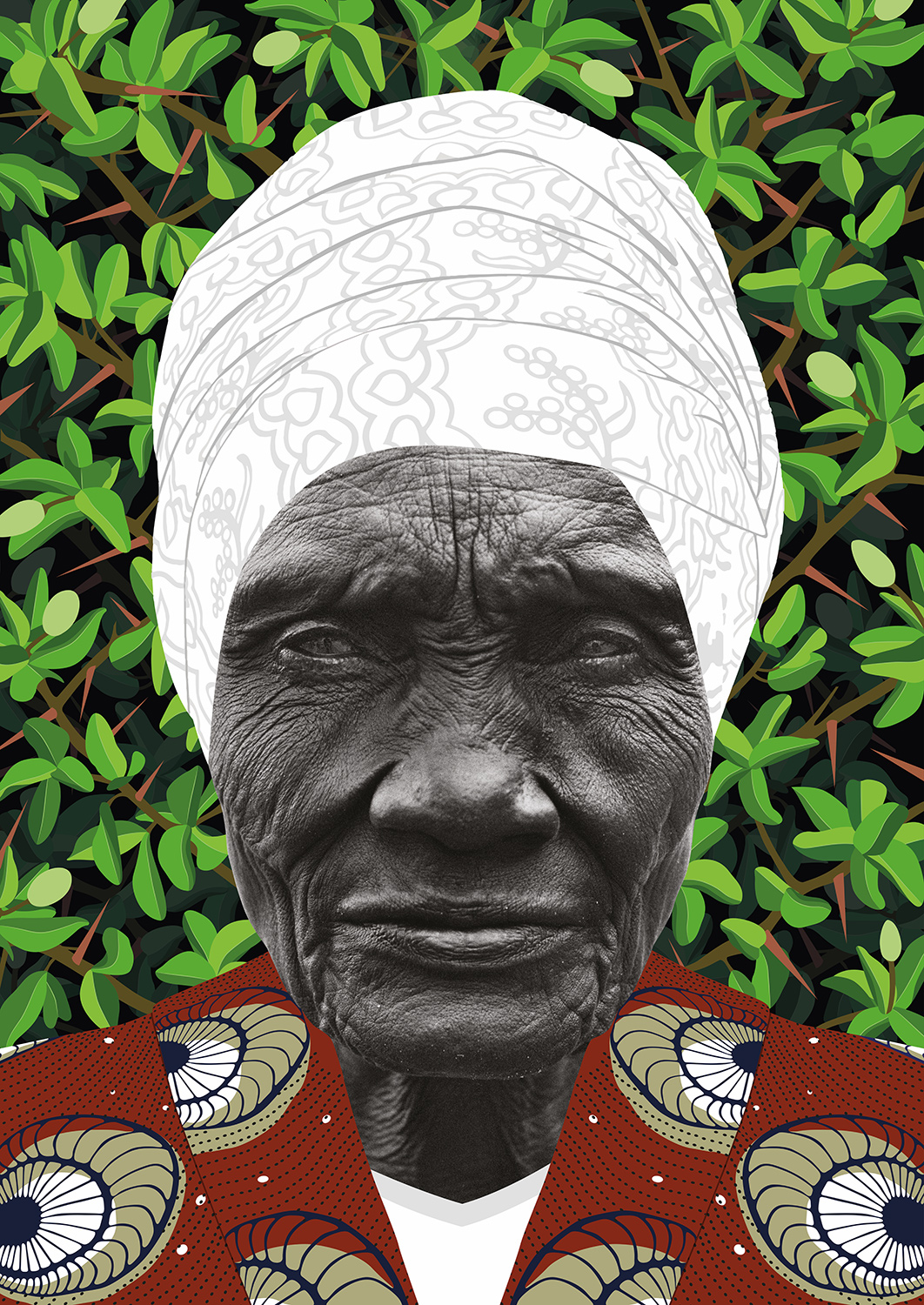
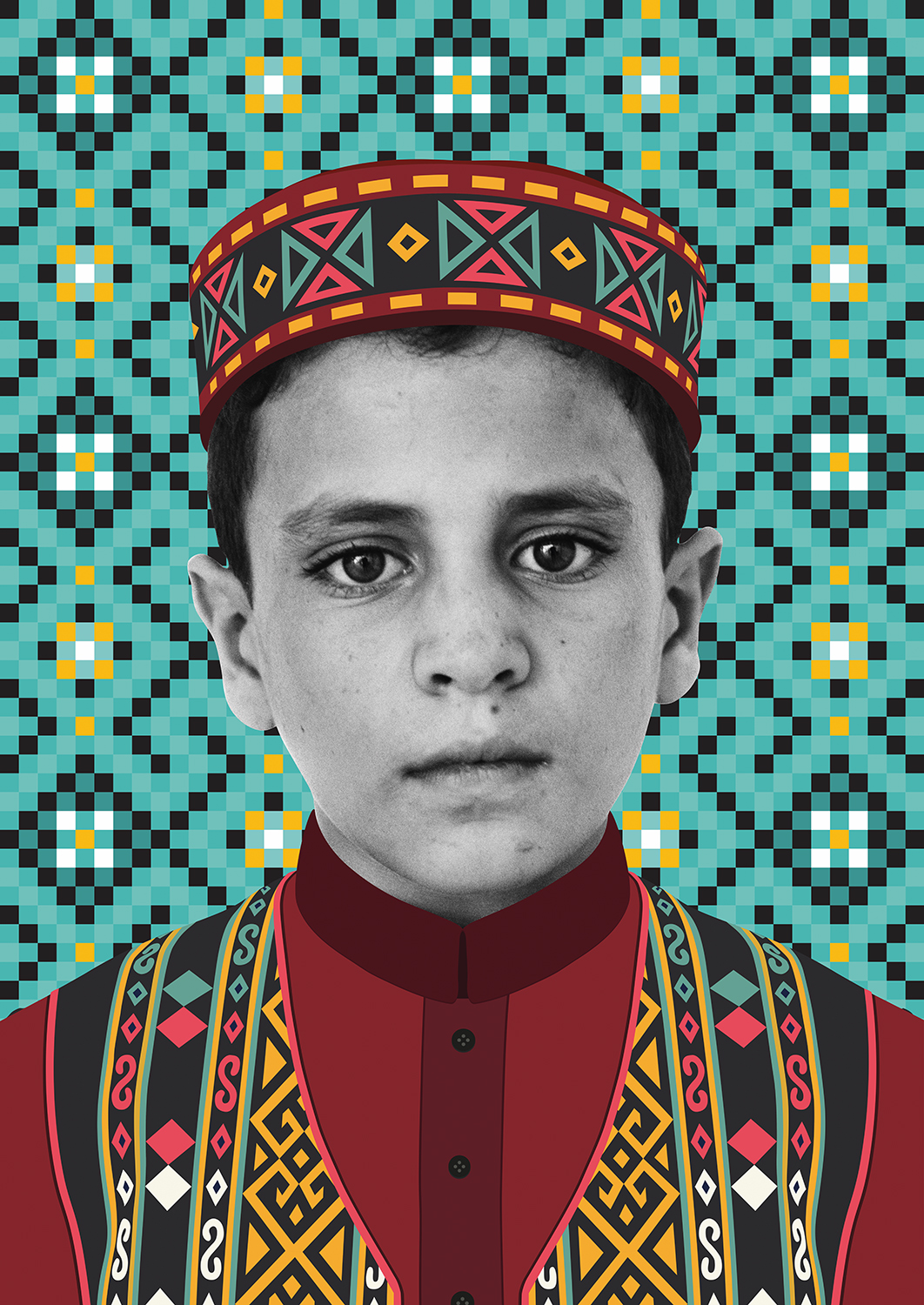

Murals: Sibomana & Giles Duley
Stories of Survivors
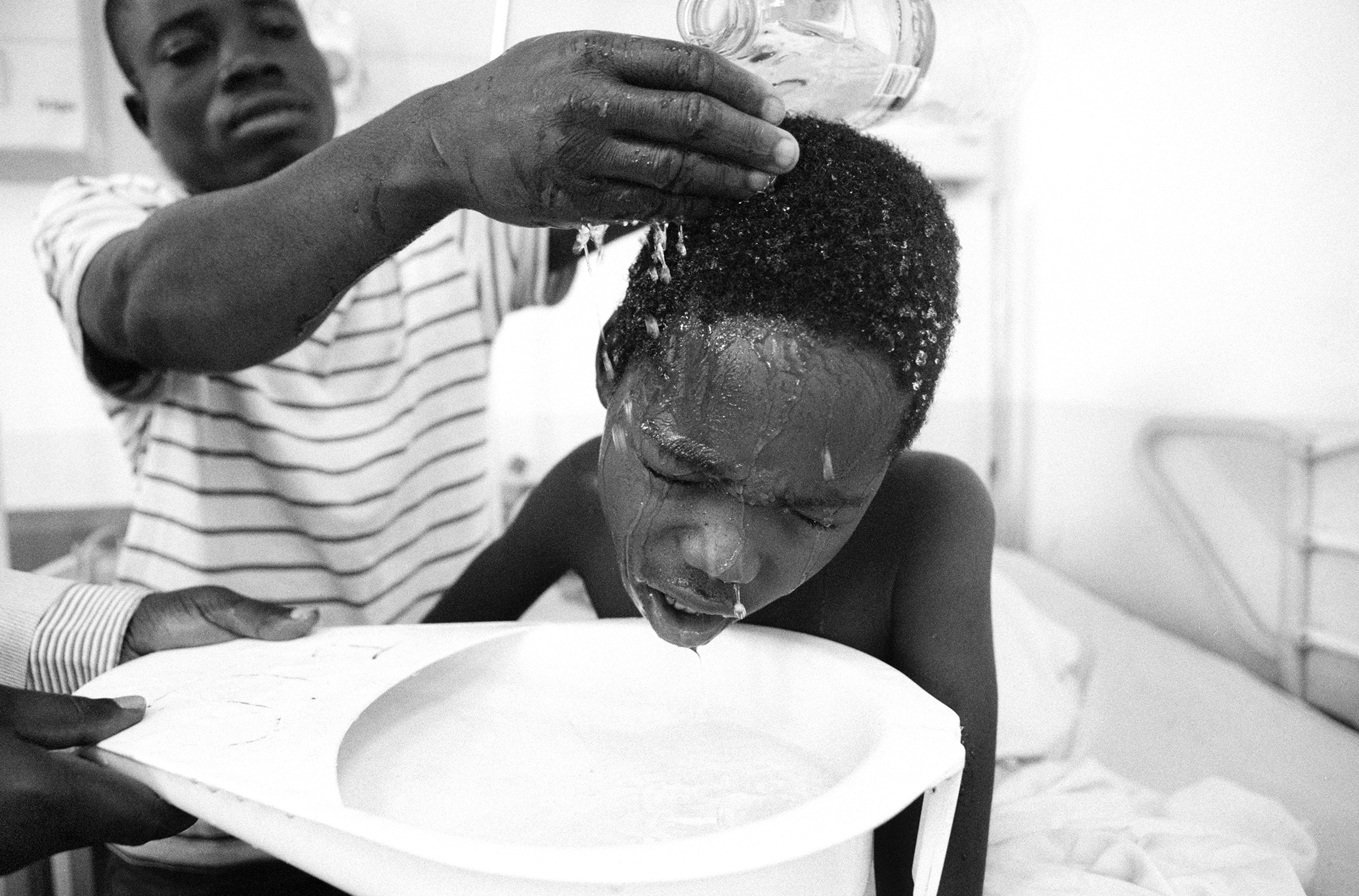
Sapalo, Angola 2018
Sapalo was playing in his uncle’s house when he saw a large rat dash across the room. He looked for something to hit it with, grabbing a lump of rusting metal that was sat on the table. He threw it at the rat.
A bright heat engulfed him and he was thrown to the floor. Disorientated, he tried to get up, but he couldn’t. Unknown to him, the lump of metal he’d picked up had been the explosive warhead from a rocket-propelled grenade that his uncle had found and brought back to the house with the intention of safely destroying it. The blast destroyed both of Sapalo’s legs. Later that day, they would be amputated just below the knee.
Angola is still recovering from 27 years of conflict that ravaged the country from 1975-2002. As a result of the conflict, a high number of the population are persons with disabilities, including amputees like Sapalo. Most are denied their rights to health care, education, physical rehabilitation and psychosocial support, and as a result remain isolated from their communities.
For a year following his accident Sapalo remained without prosthesis or rehabilitation, and was unable to access education. With the help of MAG, Legacy of War Foundation provided prosthetics and arranged fitting, as well as an adapted tricycle to help him get around. Sapalo is now back in school.
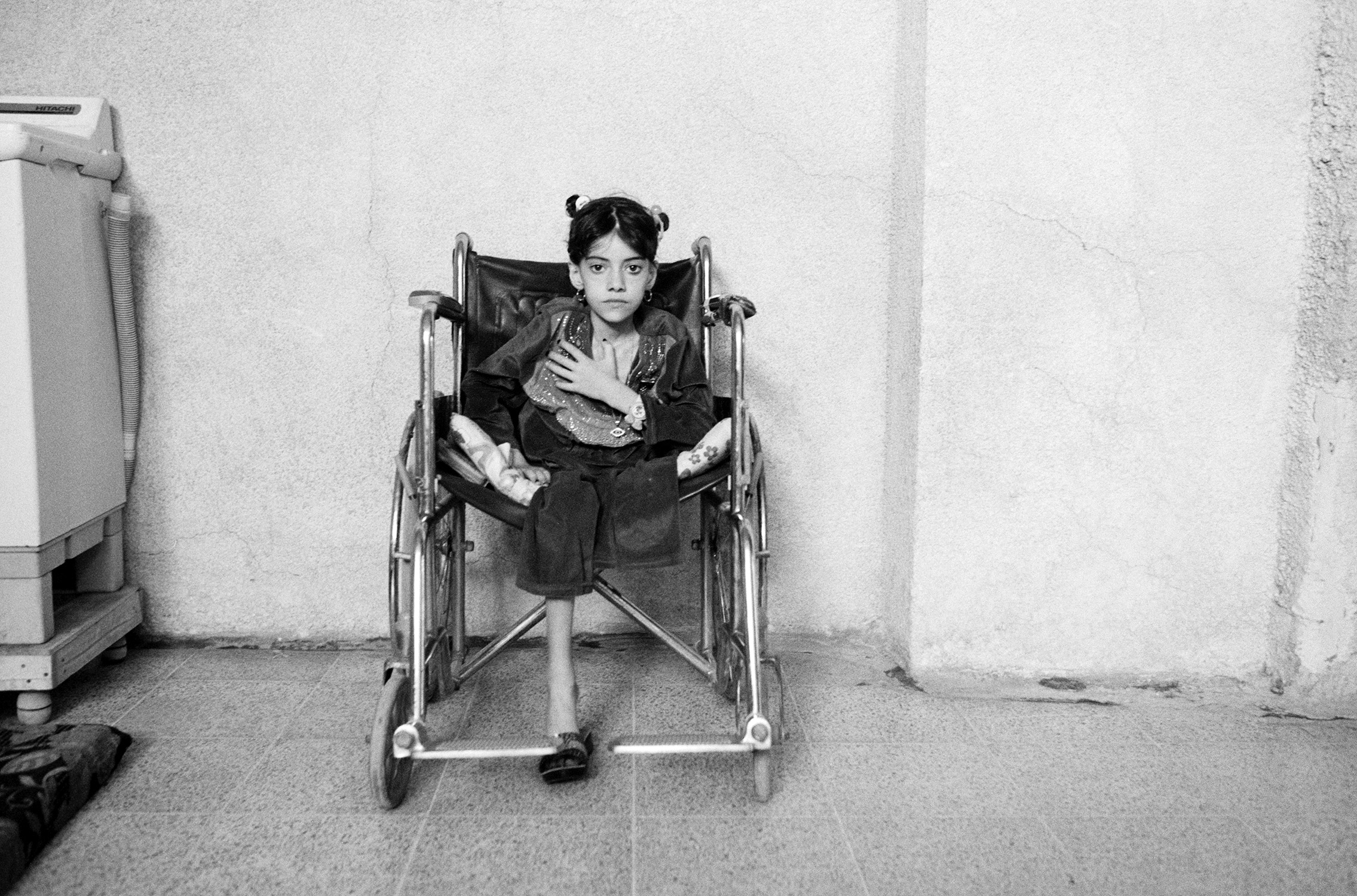
Yasmine, Iraq 2018
They first discovered Yasmine’s cancer when she was four years old. After treatment it seemed she’d recovered, and for the next few years she was able to live a normal life. In 2014 the cancer returned - but things were different now. ISIS was in control of the city and restricted access to healthcare. Even when you could get to a hospital, supplies were dwindling and most specialist doctors were in hiding or had left the city. “My father once took me to the paramedic,” Yasmine told me, “but Daesh [ISIS] stopped us and said take her to the mosque instead.”
The conflict resulted in the destruction of many hospitals and medical facilities. Even when ISIS control ended, Yasmine still wasn’t able to access treatment. “She can endure so much without complaint,” explained Yazan, her father. “She’s so patient.”
When they were finally able to get her to a hospital, set up by an NGO after the battle for the city, they discovered the cancer had spread and had to amputate her leg at the hip. She insisted on signing the consent for the operation herself. War is not just about the injuries from guns and shells. For children, it’s also about losing homes, education and, in Yasmine’s case, her right to access to healthcare.
A few weeks after this photograph was taken, Yasmine passed away. Her family wanted us to share her story, in her memory.

Aya, Lebanon and France, 2014 - 2019
After their house in Idlib, Syria, was destroyed in 2012, Aya and her family fled to Lebanon. For two years they lived in a makeshift tent next to a cement factory. The children suffered from breathing problems as a result of pollutants. Eventually they were moved by a local NGO to an unfinished building on the outskirts of Tripoli.
Aya, 7, has spina bifida, and without access to medical support and suitable living conditions her life in Tripoli was constantly under threat. The family waited in limbo. Despite her unbreakable spirit and resilience, Aya’s health deteriorated.
In June 2016, as part of the UNHCR’s resettlement scheme, the family was relocated to France. “Aya struggles to sleep,” explained Sihan, “but on the first night I was able to say to her, ‘it’s ok Aya, this is your home now.’” Aya is now in school and receiving full support for her medical needs. She is enjoying her education, playing with friends and being fully integrated within her local community.
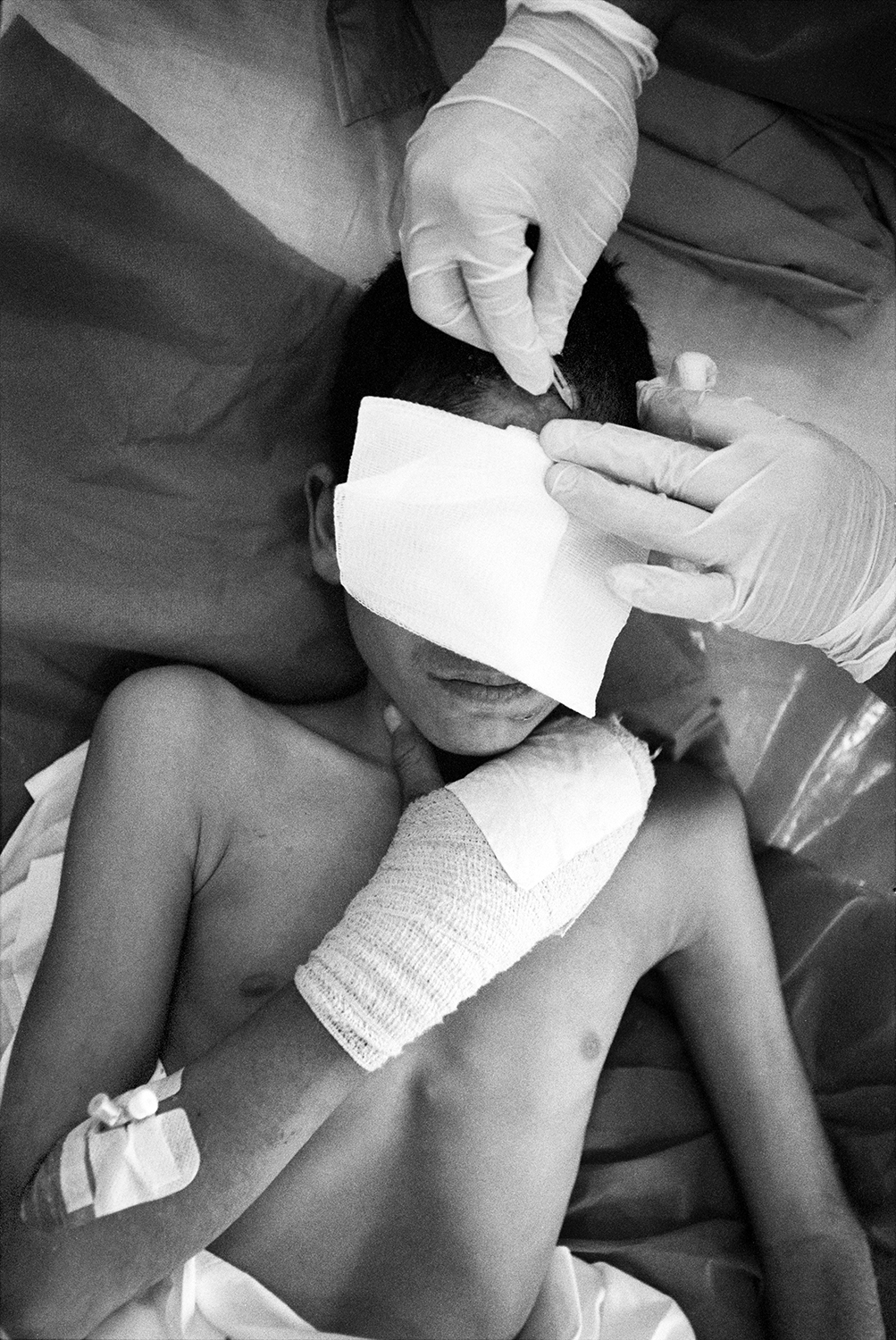
Mohamed, Iraq 2017
Hospital staff clean the wound on Mohamed Nawaf’s head. Mohamed, 14, lost both legs and suffered facial injuries and hand injuries when his friend, who was walking in front of him, stepped on a landmine. Children and young people make up more than half of landmine casualties globally.
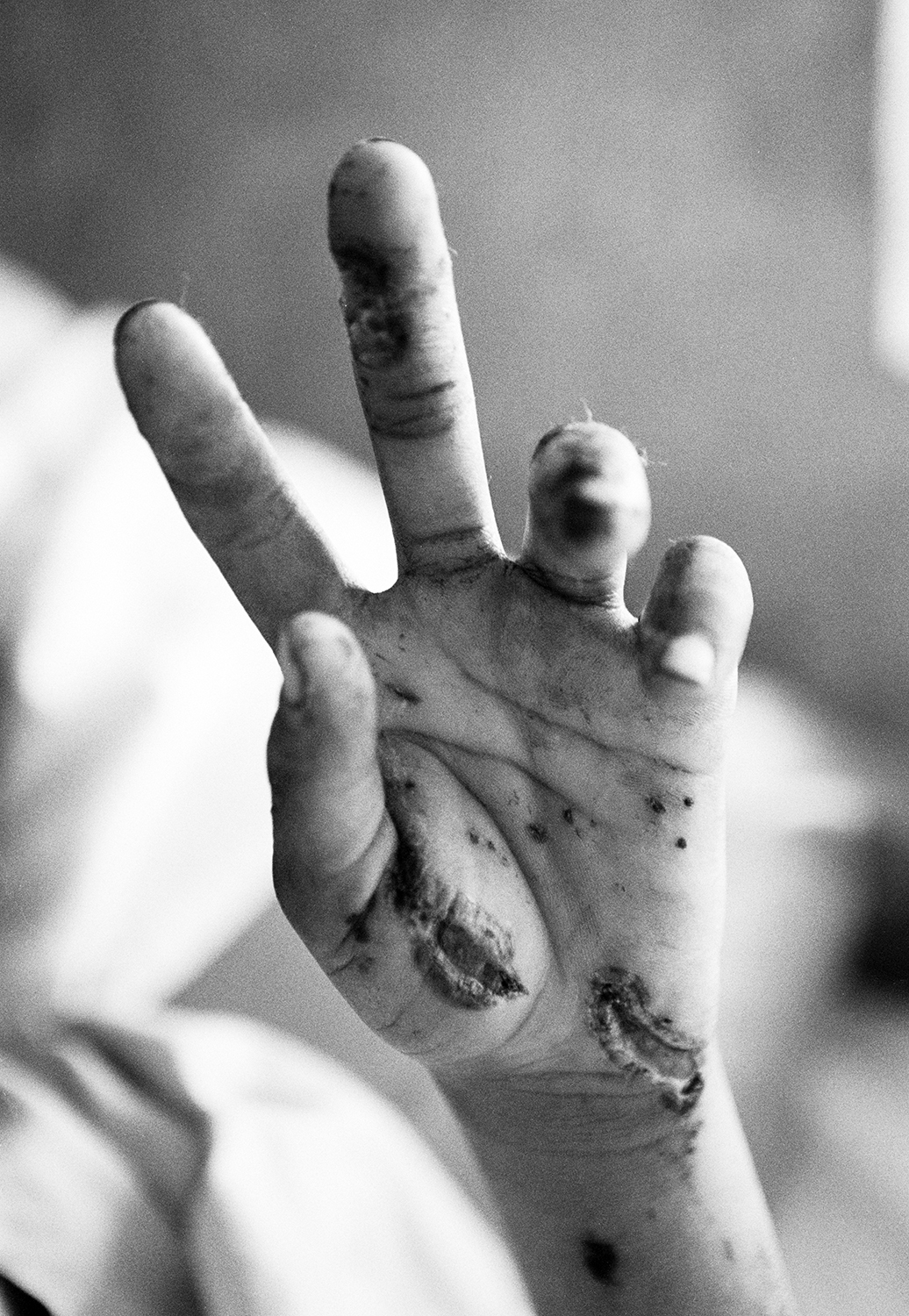
Dawood, Iraq 2017
“This fly is worse than Daesh [ISIS],” jokes Dawood Salim, as he tries to brush a persistent fly away from his face with his heavily bandaged hand.
On the 8th of March 2017 Darwood, aged 12, had been tending sheep just outside Mosul when he stepped on a landmine. He lost both legs and his right hand. “I didn’t know how brave he was,” his mother Nidal told me, “until this. They told me after the explosion he kept trying to stand, even though his legs were so injured.” By the time she got there, they had loaded him onto a tractor to get him to the nearest hospital. “He was telling me not to cry. ‘The more you cry,’ he said, ‘the more I hurt’.” As the popular song Take Me Back To Mosul is played aloud from a phone, the whole ward joins in with the chorus. And as they change the bandages on his hand, Darwood raises his fingers in a victory sign. A few days earlier I had asked Nidal if it was ok to photograph her son. Calmly and clearly, she looked at me and said – “When a child is injured like this, the whole world should see.”

Walter, Colombia, 2017
Walter Casto Morales lost his left foot after stepping on a landmine. The remnants of fifty years of conflict in Colombia make it one of the most UXO-affected countries in the world, with civilians making up the majority of casualties. Walter was herding cattle when the landmine exploded, and is now one of many Colombians living with disability caused by conflict.

Vanthy, Cambodia 2015
Vanthy So. Ratanakiri was 19 years old when he lost both hands. Forced to fight as a child soldier with the Khmer Rouge, Vanthy returned home when the fighting was over. He was clearing land near his village to farm when a clustermunition detonated. Vanthy is one of over 64000 people killed or injured by unexploded ordnance (UXO) in Cambodia since 1979.
“My whole life has been affected by war,” he said. “I have to do everything; it just takes me more time and is more difficult. I will survive for my family.”
Vanthy is now married. He and his wife have six children, who he cares for while his wife works.
Photos by Giles Duley
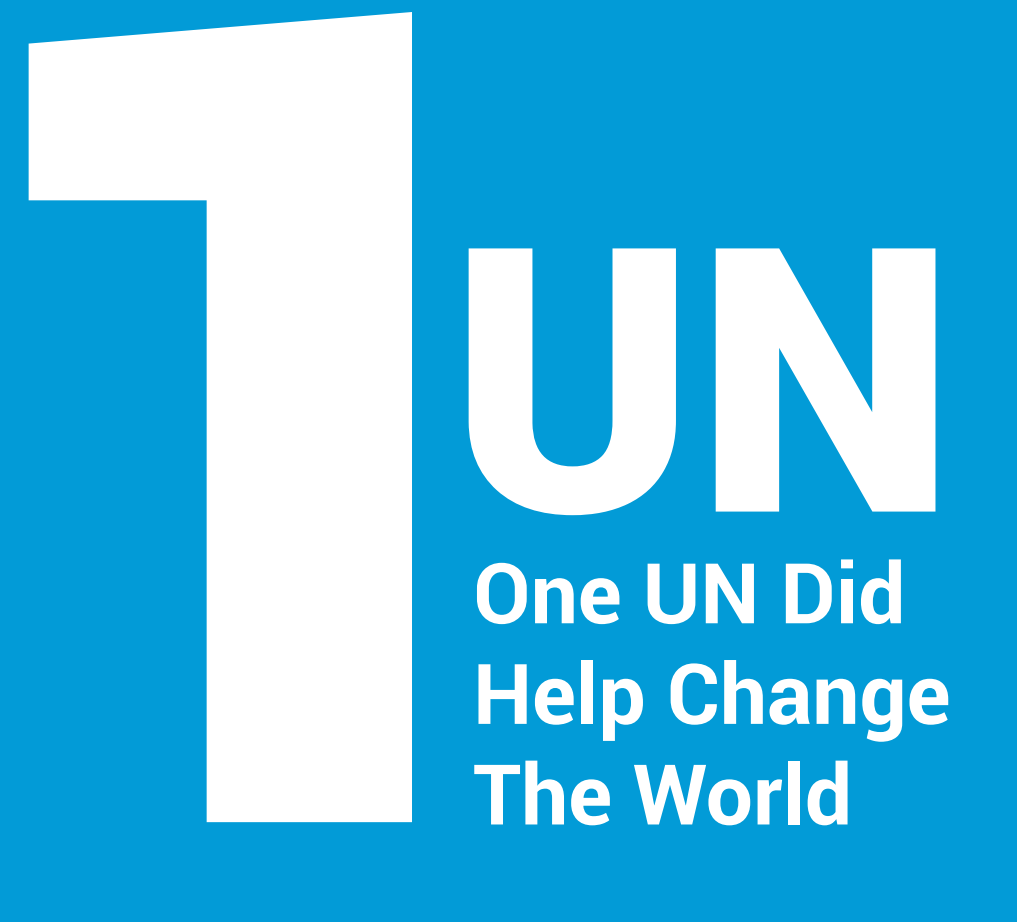
Twelve United Nations Departments and Offices of the Secretariat, specialized agencies, funds and programmes play a role in mine action programmes in 30 countries and three territories.
The twelve United Nations Departments and Offices of the Secretariat, specialized agencies, funds and programmes are: the United Nations Mine Action Service of the Department of Peace Operations (UNMAS/DPO), the Office for Disarmament Affairs (ODA), the United Nations Development Programme (UNDP), the United Nations Office for the Coordination of Humanitarian Affairs(OCHA), the Office of the United Nations High Commissioner for Human Rights (OHCHR), the Office of the United Nations High Commissioner for Refugees (UNHCR), the United Nations Children’s Fund (UNICEF), the United Nations Entity for Gender Equality and the Empowerment of Women (UN-Women), the United Nations Office for Project Services (UNOPS), the Food and Agriculture Organization of the United Nations (FAO), the World Food Programme (WFP) and the World Health Organization (WHO). The United Nations Institute for Disarmament Research (UNIDIR) and the World Bank are observers.

Photo: UNMAS
Established in 1997, the United Nations Mine Action Service (UNMAS) works to eliminate the threat posed by mines, explosive remnants of war and improvised explosive devices by coordinating United Nations mine action, leading operational responses at the country level, and in support of peace operations, as well as through the development of standards, policies and norms.
As a specialized service of the United Nations located within the Department of Peace Operations, UNMAS operates under UN legislative mandates of both the General Assembly and the Security Council. UNMAS also responds to specific requests for support from the UN Secretary-General or designated official.
Thank you for the support from Cambodia, Colombia, and Swiss Republic.
Exhibition Disclaimer
The designations and the presentation of the materials used in this exhibition, do not imply the expression of any opinion whatsoever on the part of the United Nations concerning the legal status of any country, territory, city or area or of its authorities, or concerning the delimitation of its frontiers or boundaries. Also, the boundaries and names shown and the designations used in this exhibition do not imply official endorsement or acceptance by the United Nations. Most of the data, with the exception of information presented by specific organizations and the data presented in the M&E Dashboard, comes from the International Campaign to Ban Landmines, a global network of non-governmental organizations, active in 100 countries.
Design: This exhibit was produced by UNMAS, with illustration and design by Nina Bonetti, concept and design by Jiaxuan Xiang and assistance from an anonymous designer. Original graphics and photos were provided by Giles Duley, Legacy of War Foundation. Photos were provided by the Geneva International Centre for Humanitarian Demining, The HALO Trust, Humanity & Inclusion, the International Campaign to Ban Landmines, Mines Advisory Group, and the United Nations.
This exhibit was launched in April 2022


